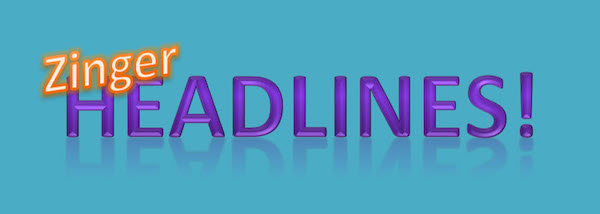

Most writers of blogs, articles or press releases are aware of the importance of starting strong. They work on a strong lead that sets up the reader for the rest of the piece. But do they work as long or as thoroughly when contemplating a headline?
Online readers can also be called “scanners,” because they are likely to scan many headlines before settling on something they want to read. Brian Clark, CEO of Copyblogger Media, notes that, on average, 8 of 10 people will read headlines, but only 2 of 10 will read beyond. If a reader doesn’t click on your headline, your stellar opening paragraph will never get the chance to lure him or her to read further. You need to hook that reader with the headline. Here are some tips:
Make Every Word Count
Although the online format means you have more space for headlines than you would in a newspaper or magazine, there’s still a limit. Avoid long, ungainly headlines.
A blog post by KISSmetrics, which focuses on analytics, marketing and testing, states that research illustrates readers tend to absorb only the first three and last three words of a headline. That means write either short, attention-grabbing headlines that make every word count, or longer attention-grabbing headlines that make every word count, especially the first and last three.
So if your headline is around six words long, you don’t have to worry about placement. But if it’s longer, place your prime content at the beginning and at the end and be conscious of your wording. Obviously, spelling and grammar are high priorities, but the headline should also be easily readable, with compelling phrases that convey something the reader wants to know, and without extra verbiage. Short, powerful, and direct.
Try numerous headlines before you decide on one. It can be tempting to write a quick headline and move on, but the headline is too important for that. Read it to yourself. Would you be intrigued by that headline over others that are competing for your attention? If not, try it again, and again, and again, until you feel that unmistakable emotional connection you get when something is just right.
Use an Online Tool
If you want to try out your headlines, you can use a headline analyzer like the one at CoSchedule. The headline on this blog post started as “How to Write Headlines That Draw Readers.” It got a score of 69. “How to Write Headlines that Impress Readers” scored 74 for the addition of a “power” word (“impress”). It also scored for emotional (“how to”) and common words, but had zero percent in uncommon words. But it seems odd to try to impress readers with your headlines, so the headline selected for this post was “Zinger headlines that quickly engage readers,” which scored a 72.
You can take some of that with a grain of salt because it’s an algorithm, rather than a human, analyzing the headline. A great headline could receive a low score simply because it’s docked for word count and character count. You could also artificially increase the score. “How to Write Headlines That Punch Readers in the Face” scored 75 points. That’s probably not a headline most writers would want to use.
Try Different Approaches
Headline writing is more than an art; there’s a psychological element at play. KISSmetrics discusses eight ways to approach headline writing — Surprise, Questions, Curiosity, Negatives, How-To, Numbers (as in list posts), Audience Reference, and Specificity — and gives ideas for each approach. It’s all in how you phrase what you want to say in order to convince readers it’s what they want to read.
A negative approach to this blog headline, for example, could have been, “Why No One Is Reading Your Blog and How Killer Headlines Could Help.” This scored 67 on the CoSchedule analyzer tool, but drew an A+ for using words in all four categories: common, uncommon, emotional and power words. (The score dropped because of the length of the headline.)
Read On
Myriad resources exist to jump-start your headline writing. Study them. Benefit from what master copywriters and copy editors, as well as today’s web-savvy wordsmiths, have learned about the power of headlines and how the right headline can attract readers to your content and bring enormous traffic.
